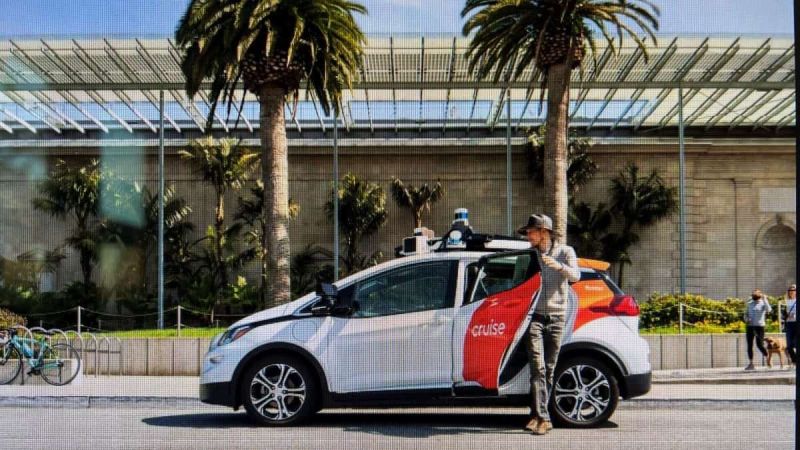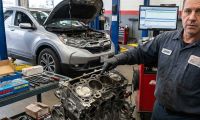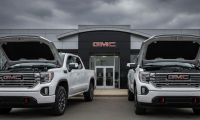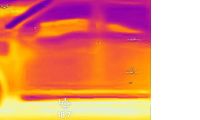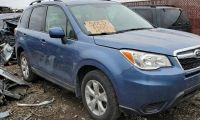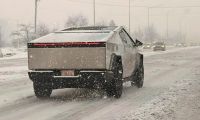General Motors' Cruise autonomous vehicle division is recalling all 950 of its specially outfitted Chevrolet Bolts to update its software. The recall comes after one of the autonomous robotaxis injured a pedestrian in San Francisco in early October. The Associated Press first reported the recall and is also reporting that GM is pausing production of Cruise vehicles while it investigates safety issues.
What is Prompting the Recall
According to the Associated Press, Cruise said in documents posted by U.S. safety regulators on Wednesday that with the updated software, Cruise vehicles will remain stationary should a similar incident occur in the future.
The Oct. 2 crash prompted Cruise to suspend driverless operations nationwide after California regulators found that its cars posed a danger to public safety. The state's Department of Motor Vehicles revoked the license for Cruise, which was transporting passengers without human drivers throughout San Francisco.
The AP reports that "in the crash, another vehicle with a person behind the wheel struck a pedestrian, sending the person into the path of a Cruise autonomous vehicle. The Cruise vehicle initially stopped but still hit the person. But it then pulled to the right to get out of traffic, pulling the person about 20 feet (six meters) forward. The pedestrian was pinned under one of the Cruise vehicle's tires and was critically injured."
Cruise says in documents posted by the U.S. National Highway Traffic Safety Administration that it already has updated software in test vehicles that are being supervised by human safety drivers. The driverless fleet will get the new software before resuming operations, the company says. It is unclear if or when the state of California will give Cruise another license to operate the driverless fleet.
GM Says A similar Accident is Highly Unlikely
In a statement to the AP Wednesday, the GM unit said that it did the recall even though it determined that a similar crash with a risk of serious injury could happen again every 10 million to 100 million miles without the update.
“We strive to continually improve and to make these events even rarer,” the statement said. “As our software continues to improve, it is likely we will file additional recalls to inform both NHTSA and the public of updates to enhance safety across our fleet.”
Cruise Adding a Safety Officer
Cruise told the AP that after examining its system, it has decided to add a chief safety officer and also hire a law firm to review its response to the Oct. 2 crash. It will also appoint a third-party engineering firm to find the technical cause, and adopt companywide “pillars” to focus on safety and transparency.
This is not the first investigation into the safety of the Cruise driverless robotaxis. Last December, NHTSA opened an investigation into the autonomous vehicles, owned primarily by General Motors, for stopping too quickly. There are also concerns that the vehicles can stop and strand passengers. There have also been odd glitches. One day, several of the vehicles in San Francisco all arrived at the same location, as if meeting for coffee. There have also been complaints that the driverless cars have blocked streets, not moving for emergency vehicles.
The AP reports that NHTSA opened an investigation Oct. 16 into four reports that Cruise vehicles may not exercise proper caution around pedestrians. The reports, including two injuries, involved vehicles operating autonomously and “encroaching on pedestrians present in or entering roadways, including pedestrian crosswalks in the proximity of the intended travel path of the vehicles.” It wasn't immediately clear whether the Oct. 2 crash was included in the probe.
What Happened During the Accident
In documents filed with NHTSA, Cruise said its automated driving system was designed in some cases to pull over and out of traffic to minimize safety risks and disruption after a crash, with the response dependent on the characteristics of the crash. But in certain circumstances such as a pedestrian positioned on the ground in the vehicle's path, pulling over is not the desired response.
The Cruise system “inaccurately characterized the collision as a lateral collision and commanded the AV to attempt to pull over out of traffic, pulling the individual forward rather than remaining stationary,” the company said.
While the California Department of Motor Vehicles didn’t elaborate on specific reasons for its suspension of Cruise’s license, the agency accused Cruise of misrepresenting safety information about the autonomous technology in its vehicles. The revocation followed a series of incidents that heightened concerns about the hazards and inconveniences caused by Cruise’s robotaxis.
Problems at Cruise could slow the deployment of fully autonomous vehicles that carry passengers without human drivers on board. It also could bring stronger federal regulation of the vehicles, which are carrying passengers in more cities nationwide. GM’s Chairman, Mary Barra, is extremely confident in the Cruise capabilities. She has posted videos of riding in one of the San Francisco robotaxis.
GM Photo
Mary Conway is a professional automotive journalist and has decades of experience specializing in automotive news analysis. She covered the Detroit Three for more than twenty years for the ABC affiliate, in Detroit. Her affection for the Motor City comes naturally. Her father ran a gas station while Mary was growing up, in Wisconsin.
Follow Mary Conway at @MaryConwayMedia and send her car news tips for future stories.


